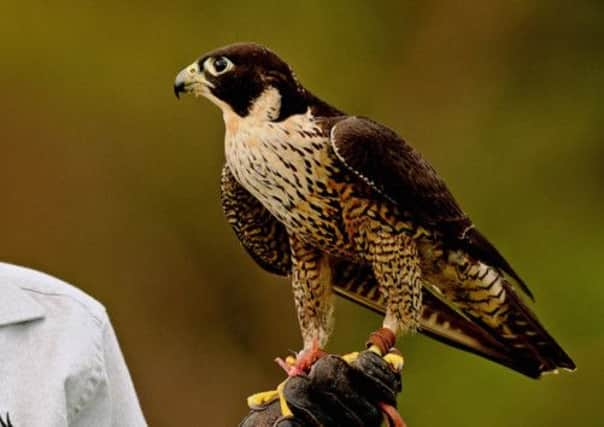Bird of prey poisonings down in new figures


For the first time, key data on the various forms of wildlife crimes have been brought together in the first annual report into wildlife crime in Scotland, covering 2012.
It reveals that there were only three confirmed cases of raptor poisonings last year - two involving buzzards and one involving a golden eagle - compared with 16 cases in 2011 and 28 in 2010.
Advertisement
Hide AdAdvertisement
Hide AdDuring the year a golden eagle was shot in Dumfries and Galloway and a hen harrier was shot in Grampian. Two osprey nests were disturbed in the Central police division area, a buzzard and golden eagle died after being illegally trapped in Tayside, a peregrine chick was stolen from a nest in Dumfries and Galloway, and a peregrine egg was stolen from a nest in Lothian and Borders.
During 2012 the total number of cases involving cruelty to wild animals fell from 40 to 26 while the number of offences involving badgers fell from 20 to eleven. But the number of salmon and freshwater fisheries offences rose from 79 to 101 and deer offences rose from 33 to 47.
The report states: “In Scotland, raptor persecution continues to be a high profile issue which receives a great deal of attention from the public, media and Parliament. While Scotland’s birds of prey are highly valued by most and considered to be emblematic of Scotland’s wild places, predation by these birds can cause problems for some game-bird managers, farmers and other land managers. In some cases conflicts, or perceived conflicts, can lead to the illegal killing and persecution of raptors.
“Bird of prey populations in Scotland are making a recovery from previous decades of persecution and from the historical use of certain agricultural pesticides. Some species such as buzzards are doing well. Others such as golden eagles, red kites and hen harriers remain in a vulnerable conservation status for a variety of reasons, but all species are still susceptible to targeted persecution. Whatever the conservation status of a bird of prey, the illegal killing and persecution is wholly unacceptable.”
It adds: “The last few years have shown an encouraging decline in raptor poisoning numbers. It is too early to say yet whether this represents a genuine reduction in overall raptor persecution, or whether there has been a corresponding increase in other forms of persecution.”
Paul Wheelhouse, the Scottish Environment and Climate Change Minister, said: “I welcome the publication of this report which is the first of its kind in Scotland. This marks an important milestone in bringing together the data which is so important in helping us understand and combat wildlife crime and it provides a basis for further refinement as data quality improves.
“We must not forget that underlying each and every statistic many of the wildlife offences highlighted entail great cruelty and suffering. Badger offences, hunting with dogs and other acts of cruelty to animals are highlighted in the report. As a civilised society we simply cannot tolerate this level of ill-treatment of our wildlife by individuals pursuing perverted pastimes.”
Malcolm Graham, the Assistant Chief Constable of Police Scotland, said: “As this report highlights, since the establishment of Police Scotland there has been an increase in the number of Wildlife Crime Liaison Officers to cover all 14 territorial policing divisions as well as the appointment of a dedicated national coordinator.
Advertisement
Hide AdAdvertisement
Hide Ad“These changes have already paid significant dividends allowing more opportunities for partnership working with greater local ownership and expertise.”
He added: “The new wildlife crime policing structures are complemented by a real enthusiasm amongst Wildlife Crime Liaison Officers to make a significant impact on this unacceptable form of criminality and to work in close harmony with those other agencies with which we have a joint responsibility to protect the natural assets of Scotland.”
Mr Wheelhouse states in his foreword to the new annual report: “Wildlife crime is varied in its scope and type. It is often committed in remote rural areas, but it is also present in the middle of our cities. It can be barbaric and cruel and is very often hugely detrimental to the conservation status of wildlife.
“The aim of this first annual report into wildlife crime in Scotland is to establish a baseline of what is happening in Scotland. Every year hereafter, we will be able to provide better and clearer information. We will start to see trends emerging and pictures developing. These reports will inform debate and remind us all about the extent of wildlife crime and what still needs to be done.”